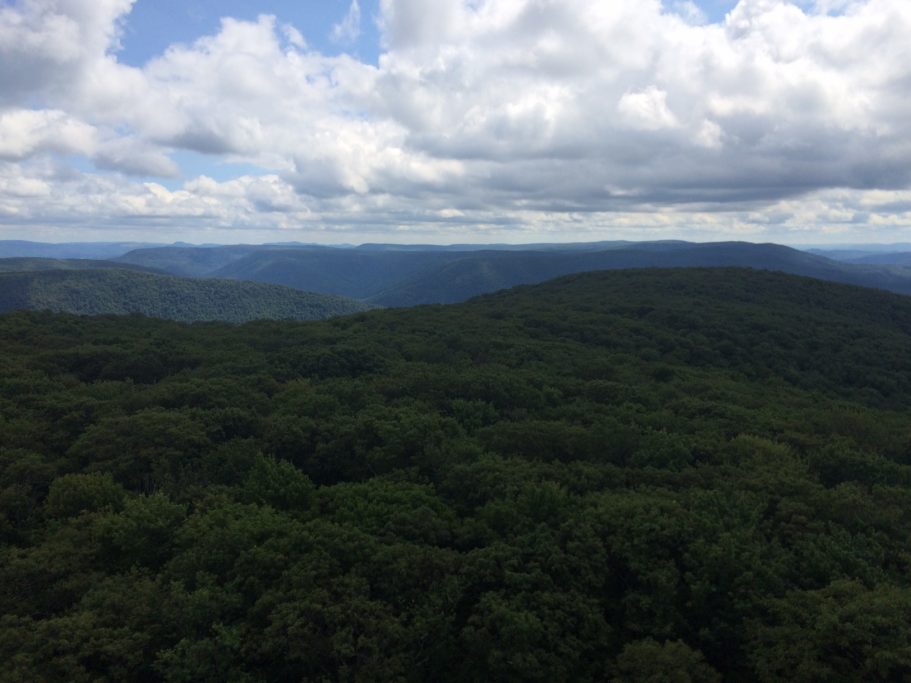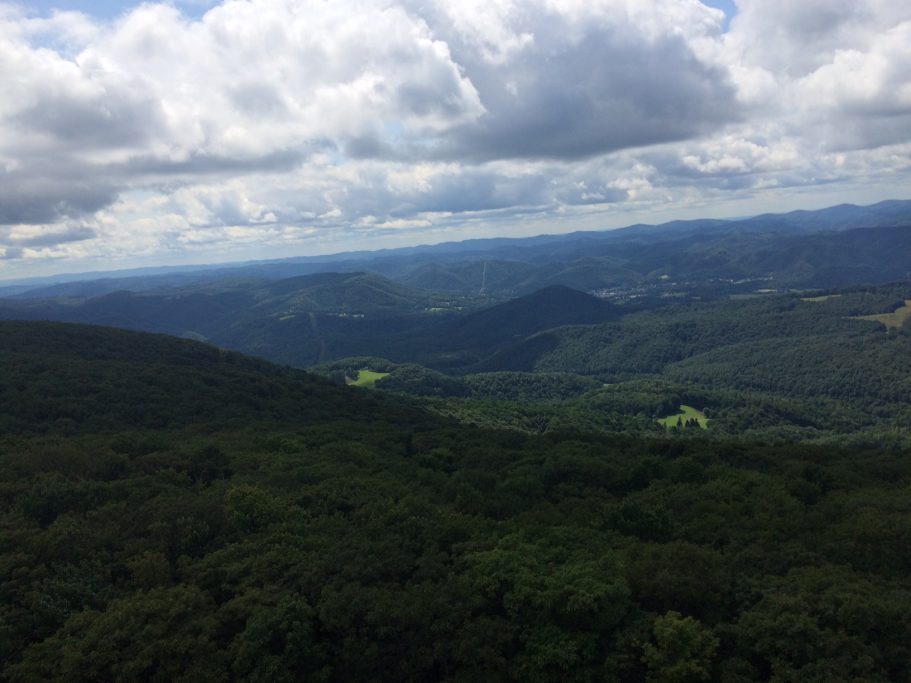PARSONS, W.Va. — There were no creaks as I walked up the narrow, steep staircase and made the turn to the next landing. However, with each flight of steps you could feel a gentle mountain breeze becoming a little stiffer. By the time the elevation reached tree-top level it was a full blown swirling wind. After four more sets of steps my head poked through a trap door to reveal a modest little room with pane windows and a view for as far as the eye could see.
It was my first ascent up the Olson Fire Observation Tower in Tucker County. The structure constructed on Backbone Mountain in 1963 is one of roughly 20 fire towers still in existence today. The Olson Tower replaced the Backbone Mountain Tower in the early 1960’s which had been the first steel tower built in the Mountain State.
Fire observation towers got their start in 1910 when the U.S. Forest Service was forced to take mitigating

action after a devastating forest fire season. The idea was to put sets of eyes high in the air across the country and spot fires before they were beyond control.
Bob Beanblossom, now retired from the West Virginia Division of Forestry and the West Virginia State Park System, spent his college days high in such a perch looking for narrow strands of smoke on the horizon. He wasn’t around when the first ones went up, but adds he’s probably glad of that.
“A lot of the early towers were simply planks nailed to the side of a tree,” Beanblossom explained on West Virginia Outdoors. “All the early day forest rangers had to do was climb to the top of that tree, spot a fire, jump on their horse and go put it out, then come back and go on to the next one. That’s all there was to it.”
Well, it certainly seemed like an easy plan in theory. The first towers in West Virginia went up in the 19-teens. Many were the work of Emory “Doc” Wriston who was unofficially the state’s first District Forest Ranger. During his day, according to Beanblossom, Wriston built 18 fire towers across the high mountains and hills of West Virginia and usually did it alone.
“He built a tower up on Bald Knob which is still there today, but he got caught up there in a snowstorm,” explained Beanblossom. “The West Virginia Pulp and Paper Company, in Wriston’s words, ‘..had a big Swede and an old mule and would pull a log to keep the path clear.’ He got trapped on that mountain for a month.”
There were two types of fire towers which emerged as the construction started across the nation. The western style tower was 14′ x 14′ and featured living quarters high up in the air. The cab was constructed with a bed, radio, and a device used to pinpoint the location of the fire. The eastern style tower was generally a taller structure, but the observation box was only 7′ x 7′. The living quarters was a cabin on the ground. A few of the western style towers were built in West Virginia, most notably the Thorny Mountain Tower which today has been renovated and is available to rent for overnight stays.
Observers used an instrument developed by early forester William Osborne to determine the exact location of a fire.
“With his instrument, you could take a bearing and cross it with another tower to pinpoint, but if you didn’t have that what made it so accurate was you could calculate with simple trigonometry the distance to a fire,” Beanblossom explained. “It was so accurate you could take a bearing on each side of the smoke and roughly determine the number of acres burning.”
Osborne’s instrument called “Osborne’s Firefinder” was a large metal disc overlying a map. The map was a 360 degree view from the tower. Optical sites on each end of the rotating disc used an azimuth to determine the trajectory and bearing–pinpointing on the map below exactly where the fire was located. As good is Osborne’s tool was, it still couldn’t compare to the ability of an experienced observer.
“After a while, observers could just see smoke pop up and tell you exactly where it was,” Beanblossom explained. “They could say, ‘That fire is burning six miles out, up Stony Fork behind Chris Lawrence’s house.'”
The towers were effective, but also expensive. Maintaining them became more and more costly and the advancement of improved technology made them obsolete. As homes in West Virginia started to install a telephone, the need for observers lessened greatly.
The U.S. Forest Service decommissioned their fire towers in 1970. The state of West Virginia continued to maintain them until 1990.
Today, some sources say there are more than 20 still standing. Beanblossom knows of about a dozen which still exist. Most are open to the public and if you can stand the heights, and the wind, they offer spectacular views for miles and miles and miles in some of West Virginia’s most picturesque locations.






